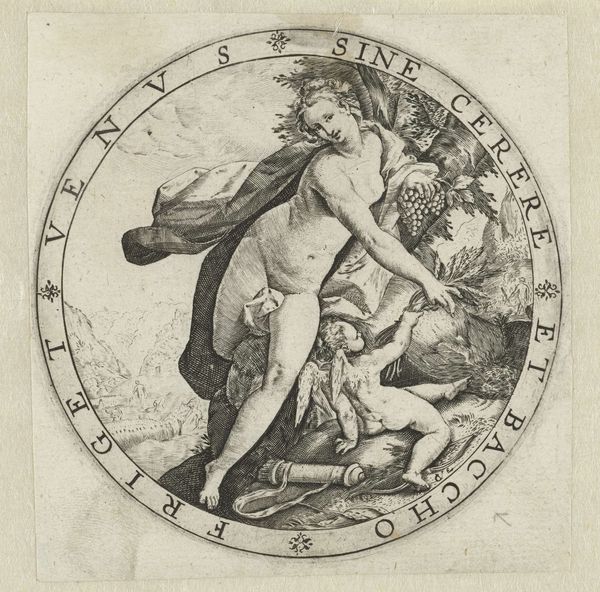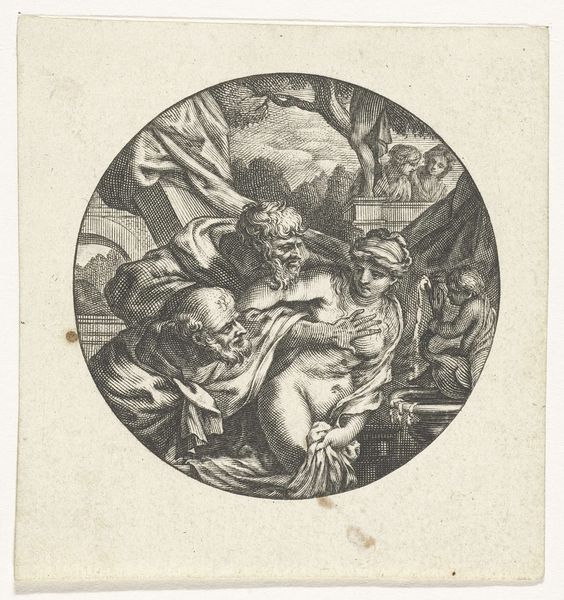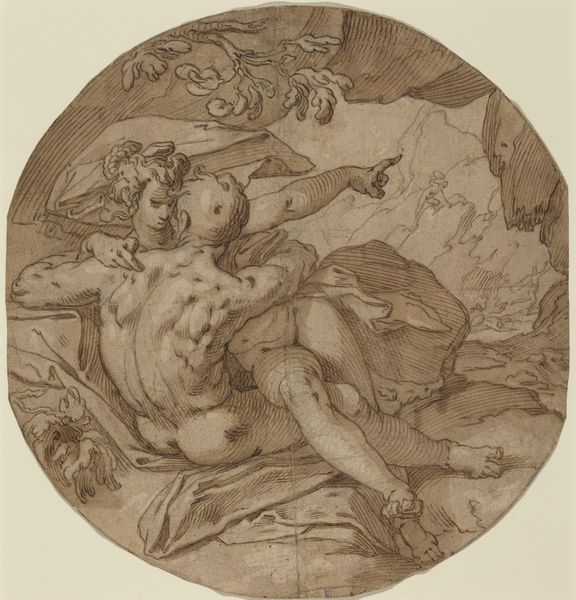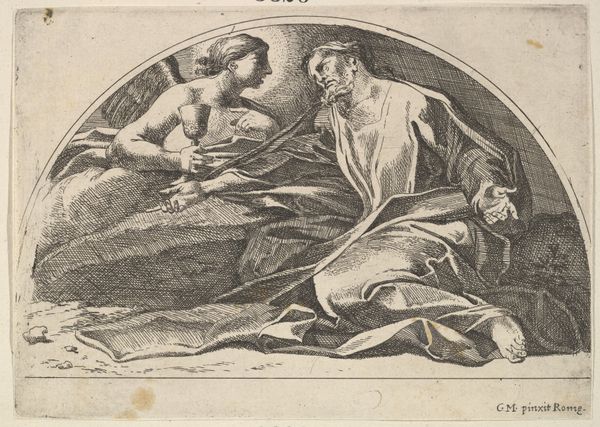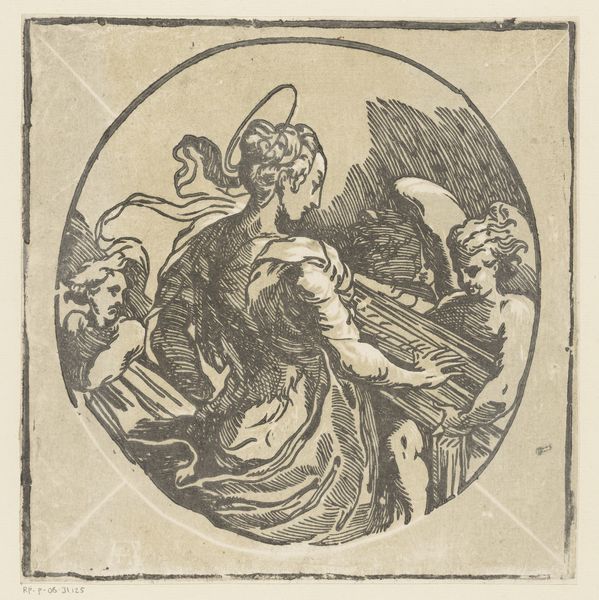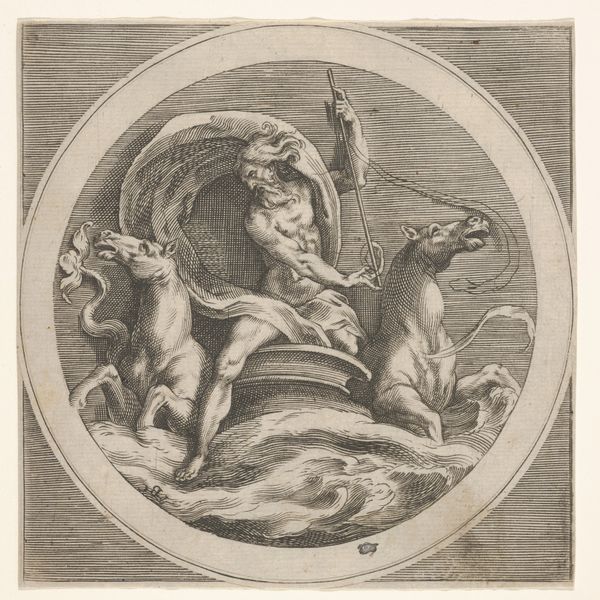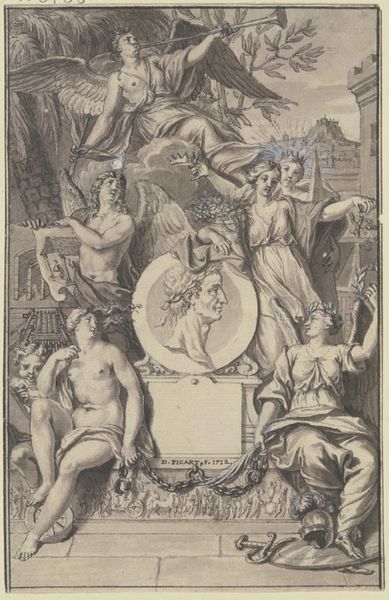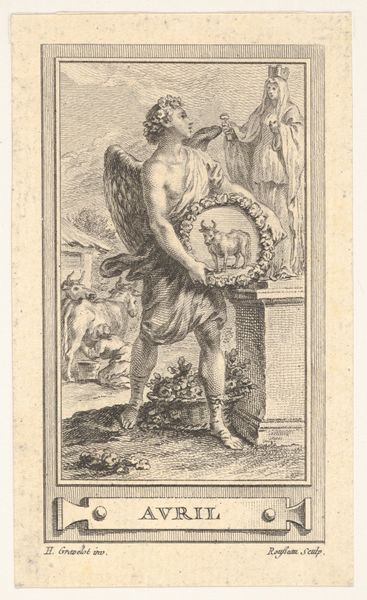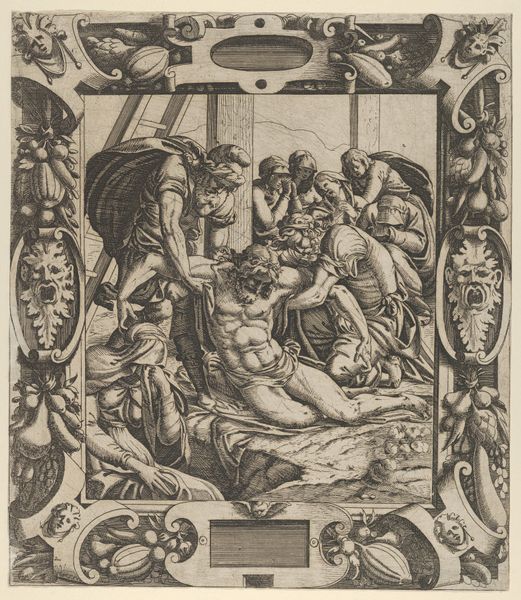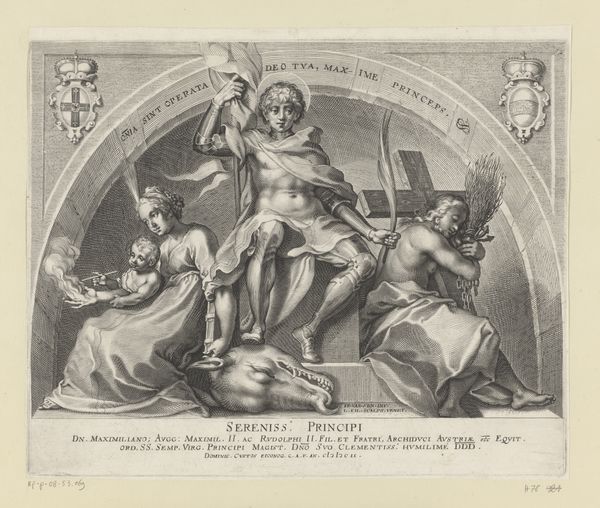
Dimensions: image: 6 11/16in. diameter
Copyright: Public Domain
Curator: Here we have Hendrick Goltzius’ engraving, "Judith with the Head of Holofernes," created between 1580 and 1590. It resides here with us at the Metropolitan Museum of Art. Editor: My first thought is, wow, what a study in contrasts! The smooth curves of Judith versus the rough, almost grotesque features of Holofernes' head. The stark lines add to the drama. Curator: Absolutely. Consider how Goltzius is playing with the popular narrative. This engraving, derived from Spranger's original design, compels us to confront themes of female empowerment against patriarchal tyranny. Judith is more than a religious heroine here; she is a symbol of resistance against systemic oppression. The act she commits—killing Holofernes—can be analyzed through the lens of justified rebellion and a feminist reclamation of power. Editor: I am immediately struck by the masterful use of line to create such dramatic depth. Look at the cross-hatching—it sculpts Judith’s form so exquisitely, emphasizing the roundness of her torso, contrasting it sharply with the flattened plane behind her, giving such a three-dimensional effect in such a tiny compass. Note also that there's this sense of unsettling beauty within it all. Curator: Right. We can delve further into the semiotics of this piece; examine how the placement of Holofernes' head at a remove highlights the symbolic implications of decapitation itself - how the image questions power structures while portraying an instance of what we would label bodily autonomy now. Editor: Also consider Goltzius’ formal strategies—the tondo shape. The composition within it forces a tight, almost claustrophobic feel, intensifying the psychological impact, turning a scene into something close to unbearable. And note how everything points inward—the gaze of both figures and that curved sword are focused at a vanishing point that sucks your focus into their dynamic! Curator: It also allows to bring forth dialogue between then and now - connecting these old narratives with present-day struggles by sparking urgent dialogue through themes like bodily agency. The historical importance can’t diminish in relevance within conversations relating to gender studies! Editor: Examining purely along stylistic grounds, the drama, intensity of the emotion and play of light—aren't they utterly baroque? It’s hard not be blown away by formal invention across it all! Curator: It truly encourages one to contemplate and consider what can constitute ‘just’ versus ‘unjust’, when exploring social stratifications within society at large. Editor: Indeed; Goltzius was working to give structure to experience. To present a single frame which captured much.
Comments
No comments
Be the first to comment and join the conversation on the ultimate creative platform.
